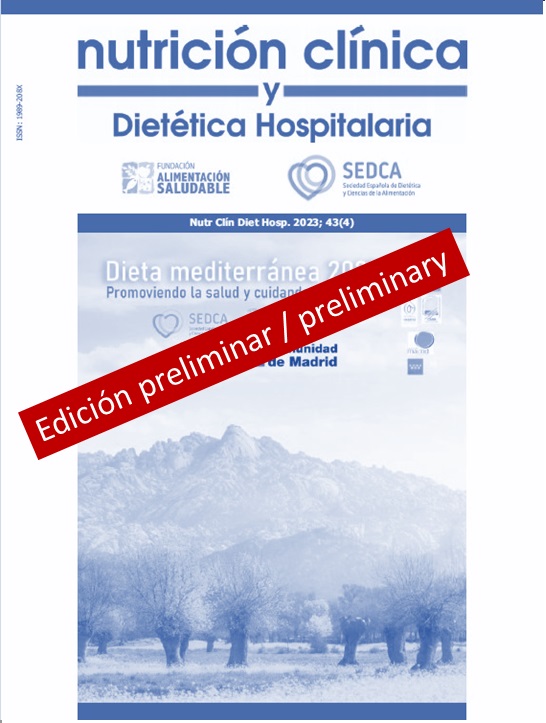Strategy for Accelerating Stunting Reduction Program in Tasikmalaya City Indonesia Using Analytic Hierarchy Process (AHP)
DOI:
https://doi.org/10.12873/453aisyahPalabras clave:
stunting, Analytic hierarchy process, Stakeholders, Strategic Decision Policy, Nutrition ProgramResumen
Through the Sustainable Development Goals (SDGs) program, the target is to address all forms of malnutrition and reduce stunting and wasting in toddlers by 2030. This movement involves policymakers working together to reduce the prevalence of stunting in Indonesia. The objective of this study was to analyze and prioritize, through the Hierar chical Analytical Process (AHP), public policy strategies to accelerate
the reduction of stunting in the city of Tasikmalaya.
Methods: This research was conducted using a mixed
method, including a qualitative approach for interviews and a quantitative approach for prioritization analysis using AHP. The sampling technique used a purposive sampling, with 14 respondents, with the inclusion criteria were: more than 5 years of experience in nutrition policy, representation from key institutions, and a decision-making level of middle to upper management. Interviews were conducted to obtain information on
strategic issues in stunting management in Tasikmalaya City.
The selection of these alternative policy strategies will be determined in focus group discussions (FGDs) held at government institutions. AHP analysis is carried out using Expert Choice software version 10.
Results: Based on the Analytical Hierarchy Process from
respondents, the most important alternative strategy is the macronutrient intake intervention. This was determined through an evaluation based on four key criteria: budgetary readiness, infrastructure, institutional sustainability, and
community readiness. For example, providing locally sourced food supplements, such as eggs and milk, to toddlers is considered the most rapid and effective way to address stunting in toddlers. This research found that three months of Food Supplement support resulted in increased weight, as well as improvements in nutritional status. Most toddlers experienced weight gain during the support period.
Conclusion: Macro-nutrition interventions are clearly
superior to other program strategies because this program can be sustainable. The government has to provide more macronutrient interventions for toddlers .
Referencias
Aisyah, Khomsan, Tanziha, and Riyadi. (2024). Modeling hidden hunger in toddlers to determine the most influential micronutrients in stunting. Nutrición Clínica y Dietética Hospitalaria. 44, 3 (Jul. 2024).
Alam, A., Khatun, W., Khanam, M., Ara, G., Bokshi, A., Li, M., & Dibley, M. J. (2020). “In the past, the seeds I planted often didn't grow.” A Mixed-Methods Feasibility Assessment of Integrating Agriculture and Nutrition Behavior Change Interventions with Cash Transfers in Rural Bangladesh. International Journal of Environmental Research and Public Health, 17(11), 4153.
Aryeetey, R., & Covic, N. (2020). A review of leadership and capacity gaps in nutrition-sensitive agricultural policies and strategies for selected countries in Sub-Saharan Africa and Asia. Food and Nutrition Bulletin, 41(3), 380-396.
Coile, A., Wun, J., Kothari, M.T., Hemminger, C., Fracassi, P., & Di Dio, D. (2021). Scaling up nutrition through multisectoral planning: An exploratory review of 26 national nutrition plans. Maternal & Child Nutrition, 17(4), e13225.
Di Prima, S., Wright, E.P., Sharma, I.K., Syurina, E., & Broerse, J.E. (2022). Implementation and scale-up of nutrition-sensitive agriculture in low- and middle-income countries: a systematic review of what works, what doesn't work and why. Global Food Security, 32, 100595
Gaihre, S., Kyle, J., Semple, S., Smith, J., Marais, D., Subedi, M., & Morgan, H. (2019). Bridging barriers to advance multisector approaches to improve food security, nutrition, and population health in Nepal: transdisciplinary perspectives. BMC Public Health, 19, 1-14.
Food Security Council. 2020. Map of Food Security and Vulnerability of Indonesia. Jakarta (ID): Ministry of Agriculture of the Republic of Indonesia and World Food Programme (WFP).
McGovern, M.E., Krishna, A., Aguayo, V.M., & Subramanian, S.V. (2017). A review of the evidence linking child stunting to economic outcomes. International Journal of Epidemiology, 46(4), 1171–1191.https://doi.org/10.1093/ije/dyx017
Mills, C. A. (2018). Politics, policy, and implementation: The 'Ghanaian Paradox'. Brookings Institution, Retrieved from https://www.brookings.edu/blog/africa-in-focus/2018/07/18/politics-policy-and-implementation-the-ghanaian-paradox/
Movement, SUN (2020). COVID-19 and nutrition: SUN movement information note. Scaling Up Nutrition Movement Secretariat.
Nasrul, et.al. 2024. The Determinants of Stunting in Stunting Focus Areas of Sigi Regency: A Study of Risk Factors and Recommendations for Intervention. Clinical Nutrition and Hospital Dietetics. 44, 3 (Jul. 2024).
Saaty TL, Vargas LG. 2012. Models, methods, concepts & applications of the analytic hierarchy process 2nd ed. New York (USA): Springer New York, NY.
Susilo J. 2022. Monitoring and evaluation of supplementary feeding for malnourished toddlers. Proceedings of the National Scientific Meeting of the Indonesian Nutritionists Association. 21-22.
Tasikmalaya City Health Office. 2020. Report on Community-based Nutrition Recording and Reporting. Tasikmalaya.
Wesley, A.S., De Plaen, R., Michaux, K.D., Whitfield, K.C., & Green, T.J. (2019). Integrating nutrition outcomes into agricultural development for impact at scale: Highlights from the Canadian International Food Security Research Fund. Maternal & Child Nutrition, 15, e12812.
WHO. 2014. Childhood Stunting: Challenges and Opportunities. Report of a Promoting Healthy Growth and Preventing Childhood Stunting Colloquium. WHO Geneva 34.
Descargas
Publicado
Licencia
Derechos de autor 2025 Nutrición Clínica y Dietética Hospitalaria

Esta obra está bajo una licencia internacional Creative Commons Atribución-NoComercial-SinDerivadas 4.0.
Los lectores pueden utilizar los textos publicados de acuerdo con la definición BOAI (Budapest Open Access Initiative)







